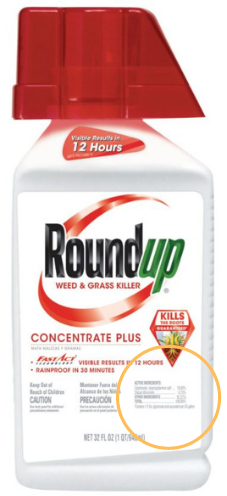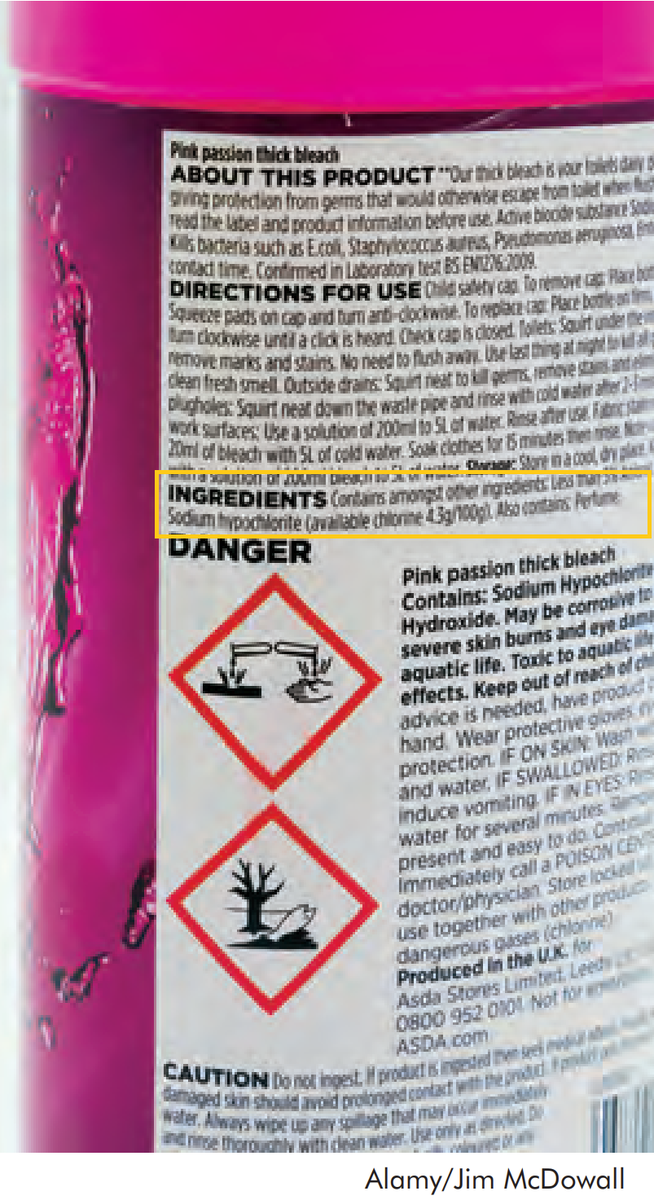Gateway on Pesticide Hazards and Safe Pest Management
How To Find Ingredients in Pesticide Products
Beyond Pesticides offers resources below to evaluate the health and ecological effects of specific chemical exposure from ACTIVE INGREDIENTS in pesticide products, as well as regulatory information and supporting scientific documents. Because various pesticide products can contain more than one active ingredient, it is important to READ the LABEL to determine chemical components.
With 192 different active ingredients and counting, it is essential to establish the connection between the use of these chemicals and their respective hazards.
View the step-by-step guide on how to search for the active ingredient(s) in pesticide products below:
- Go to U.S. EPA's Pesticide Product and Label System and enter the product name. The generic product name may vary.
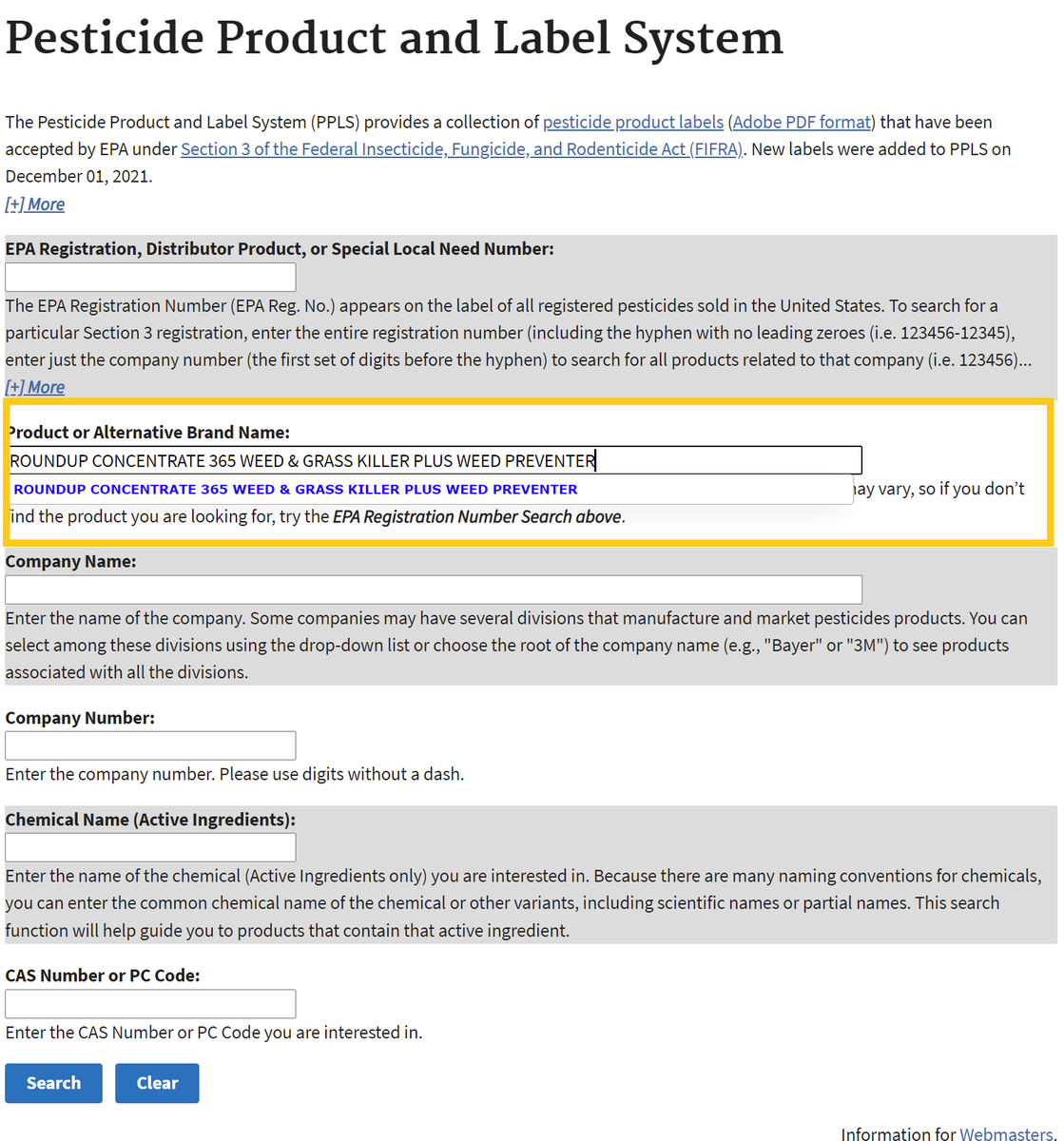
- After searching, click on the chemical ingredients tab or the link for the most recent label to find Active Ingredients.
Chemical List Label List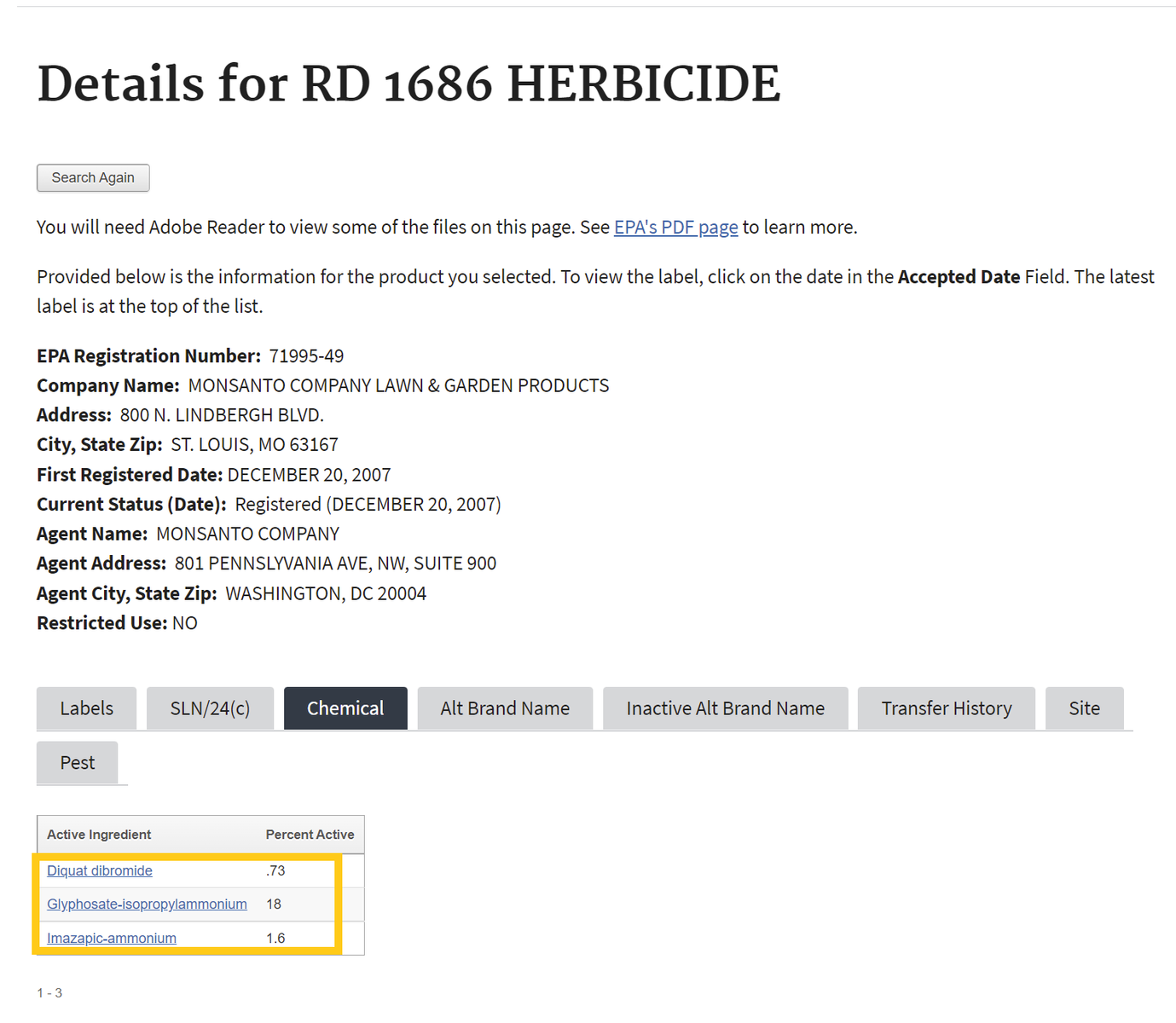
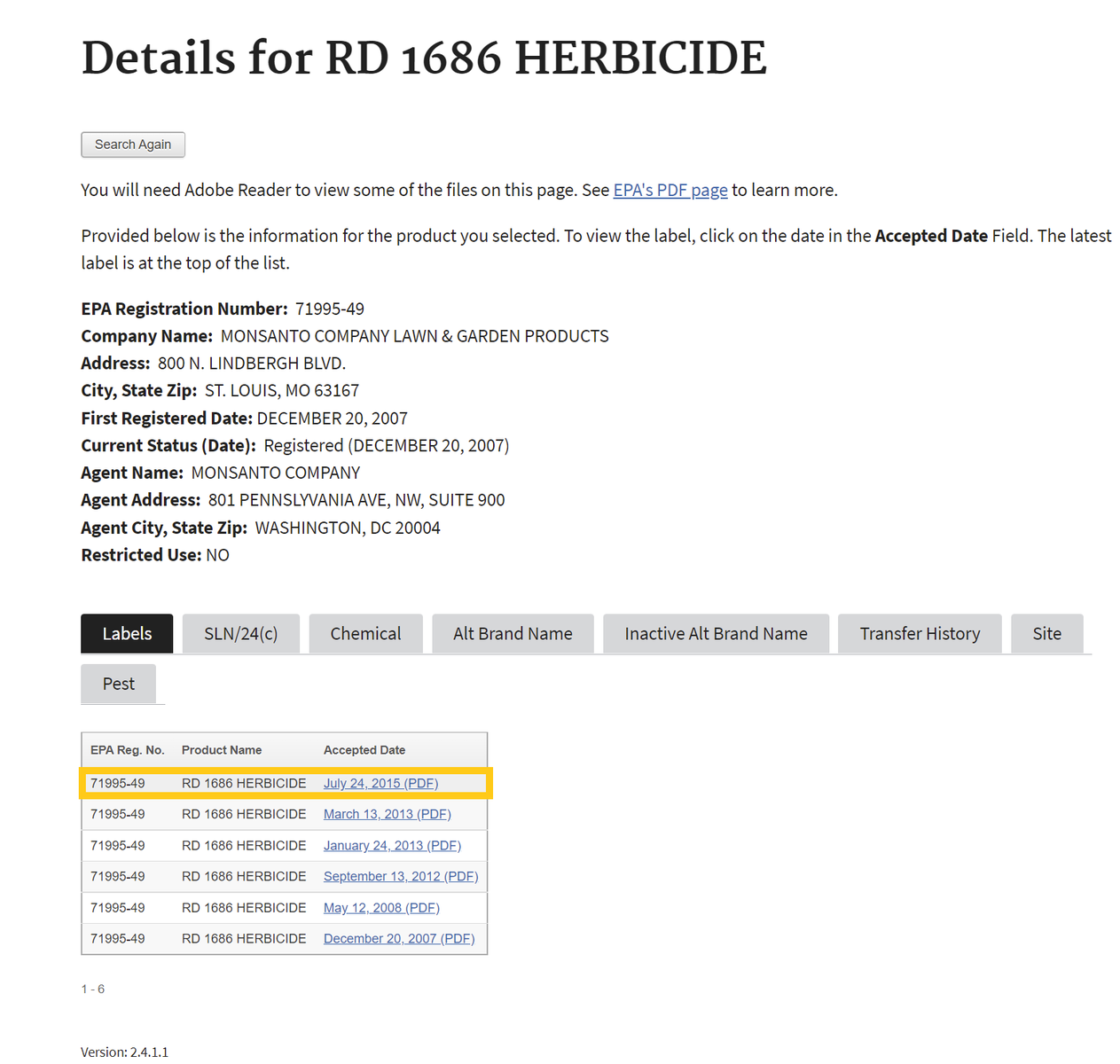
If one selects the chemical ingredients tab, skip to Step 4 . If not, proceed to step number 3 - To find the active ingredient(s) on the label, search for the page in the document containing the date of registration. Usually, the active ingredients section occurs within the first few pages of the label document.
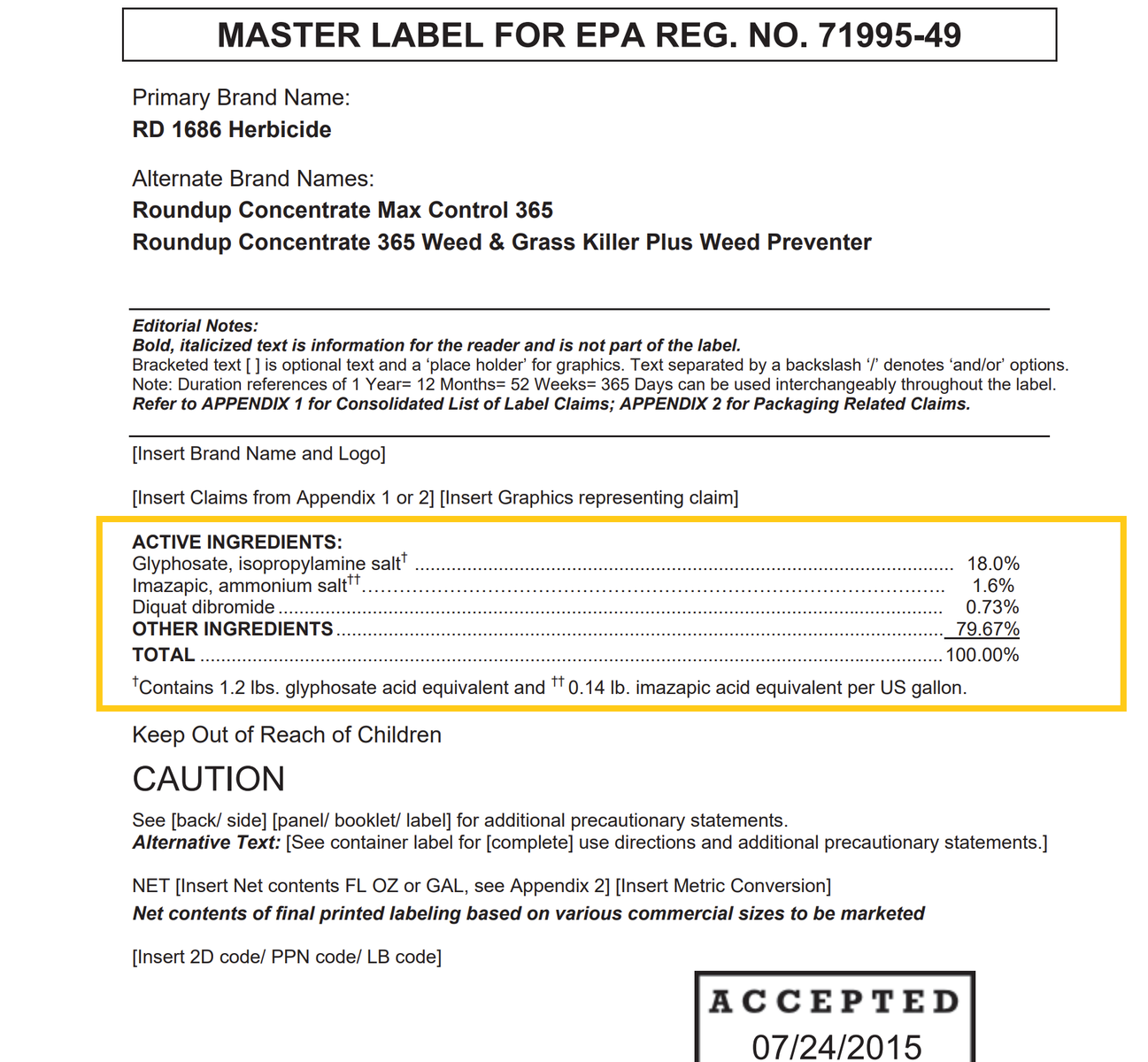
- Return to the Beyond Pesticides Gateway and search for the active ingredient name in the yellow box to the right or from the list below.
Carbaryl
General Information
- Fact Sheet: Carbaryl.pdf
- Product Names:
- Chemical Class: Carbamate insecticide
- Uses: Agriculture fruit and nut trees, many types of fruit and vegetables, and grain crops; ornamental, turf and golf courses, residential lawns
- Alternatives: Organic agriculture, Organic lawn care
- Beyond Pesticides rating: Toxic
Health and Environmental Effects
- Cancer: Likely (2, 16)
- Endocrine Disruption: Yes (36)
- Reproductive Effects: Yes (13)
- Neurotoxicity: Yes (8)
- Kidney/Liver Damage: Yes (4)
- Sensitizer/ Irritant: Yes (4)
- Birth/Developmental: Yes (6)
- Detected in Groundwater: Yes (4)
- Potential Leacher: Yes (4)
- Toxic to Birds: Yes (72)
- Toxic to Fish/Aquatic Organisms: Yes (4)
- Toxic to Bees: Yes (8)
Residential Uses as Found in the ManageSafe™ Database
- Dandelions
- Bagworms
- Carpenter Ants
- Carpenter Bees
- Tree-boring Caterpillars
- Chiggers
- Grubs
- Wasps and Yellowjackets
- Snails and Slugs
- Ants
- Chinch Bugs
- Fleas
- Gypsy Moths
- Cockroaches
- Head Lice
- Ticks
- Thrips
- Whiteflies
Additional Information
- Regulatory Status:
- EPA Plans New Use Limitations on Carbaryl, Carbofuran, and Methomyl to Protect Salmon and Steelhead in California, Idaho, Oregon, and Washington (5/2010)
- EPA Reregistration Eligibility Decision (RED) signed (8/2008)
- Beyond Pesticides' and IRED comments
- Natural Resources Defense Council's (NRDC) comments
- Supporting information:
- Daily News Blog entries (Beyond Pesticides)
- Asthma, Children and Pesticides (Beyond Pesticides)
- Poisoning our Pets (Beyond Pesticides)
- NCAP Carbaryl Factsheet (Northwest Coalition for Alternatives to Pesticides)
- NPIC Carbaryl Factsheet (National Pesticide Information Center)
- PAN Pesticides Database:Carbaryl (Pesticide Action Network)
- Studies:
- Carbaryl exposure and incident cancer in the Agricultural Health Study. Mahajan, R., et al. 2007. Int J Cancer 121(8):1799-1805.
- Carbaryl, A Pesticide Causes "Toxic Hepatitis" in Albino Rats. Hamid, S., Mahajan, R. and Singh, H., 2012. J Cytol Histol, 3(4), pp.149-154.
- Cohort mortality and nested case-control study of lung cancer among structural pest control workers in Florida (United States). Pesatori, A.C., et al. 1994. Cancer Causes and Control 5:310-318.
- Exposure to nonpersistent insecticides and male reproductive hormones.. Meeker JD, et al. 2006. Epidemiology;17(1):61-8
- Family pesticide use and childhood brain cancer.. Davis, J., et al. 1993. Family pesticide use and childhood brain cancer. Archives of Environmental Contamination and Toxicology 24:87-92
- Genetic Polymorphisms of Pesticide-Metabolizing Enzymes and Transporters in Agricultural Workers and Thyroid Hormone Levels. Sirivarasai, J., Chanprasertyothin, S., Kongtip, P. and Woskie, S. Risk Management and Healthcare Policy, 14, p.3435.
- Pesticides applied to crops and amyotrophic lateral sclerosis risk in the U.S. Andrew, A., Zhou, J., Gui, J., Harrison, A., Shi, X., Li, M., Guetti, B., Nathan, R., Tischbein, M., Pioro, E.P. and Stommel, E. NeuroToxicology, 87, pp.128-135.
- Residues of agrochemicals in beebread as an indicator of landscape management. Bogo, G. et al. (2024) Residues of agrochemicals in beebread as an indicator of landscape management, Science of The Total Environment. Available at: https://www.sciencedirect.com/science/article/abs/pii/S0048969724042232?via%3Dihub.
- Exposure to pesticides, persistent and non − persistent pollutants in French 3.5-year-old children: Findings from comprehensive hair analysis in the ELFE national birth cohort. Macheka, L. et al. (2024) Exposure to pesticides, persistent and non − persistent pollutants in French 3.5-year-old children: Findings from comprehensive hair analysis in the ELFE national birth cohort, Environment International. Available at: https://www.sciencedirect.com/science/article/pii/S0160412024004677.
- Pre-Conception And First Trimester Exposure To Pesticides And Associations With Stillbirth. Furlong, M. et al. (2024) Pre-conception and first trimester exposure to pesticides and associations with stillbirth, American Journal of Epidemiology. Available at: https://academic.oup.com/aje/advance-article-abstract/doi/10.1093/aje/kwae198/7714541.
- Pesticides and prostate cancer incidence and mortality: An environment-wide association study. Soerensen, S. et al. (2024) Pesticides and prostate cancer incidence and mortality: An environment-wide association study, Cancer. Available at: https://acsjournals.onlinelibrary.wiley.com/doi/10.1002/cncr.35572.
- Pesticide-Induced Inflammation at a Glance. Lopes-Ferreira, M. et al. (2023) ‘Pesticide-induced inflammation at a glance’, Toxics, 11(11), p. 896. doi:10.3390/toxics11110896.
- Pesticide exposure and sleep disorder: A cross-sectional study among Thai farmers. Juntarawijit, C. et al. (2025) Pesticide exposure and sleep disorder: A cross-sectional study among Thai farmers, Heliyon. Available at: https://www.cell.com/heliyon/fulltext/S2405-8440(24)17154-X.
- Carbamate Insecticides Target Human Melatonin Receptors. Popovska-Gorevski, M., Dubocovich, M. and Rajnarayanan, R. (2016) Carbamate Insecticides Target Human Melatonin Receptors, Chemical Research in Toxicology. Available at: https://pubs.acs.org/doi/10.1021/acs.chemrestox.6b00301#.
- Pharmacological Actions of Carbamate Insecticides at Mammalian Melatonin Receptors. Glatfelter, G. et al. (2021) Pharmacological Actions of Carbamate Insecticides at Mammalian Melatonin Receptors, The Journal of Pharmacology and Experimental Therapeutics. Available at: https://jpet.aspetjournals.org/article/S0022-3565(24)25757-8/fulltext.
- A cocktail of contaminants: how mixtures of pesticides at low concentrations affect aquatic communities. Relyea R. A. (2009). A cocktail of contaminants: how mixtures of pesticides at low concentrations affect aquatic communities. Oecologia, 159(2), 363–376. https://doi.org/10.1007/s00442-008-1213-9
- Pesticide contamination in indoor home dust: A pilot study of non-occupational exposure in Argentina. Aparicio, Virginia & Kaseker, Jessica & Scheepers, Paul & Alaoui, Abdallah & Figueiredo, Daniel & Mol, H. & Silva, Vera & Harkes, Paula & dos Santos, Danilo & Geissen, Violette & Costa, José. (2025). Pesticide Contamination in Indoor Home Dust: A Pilot Study of Non-Occupational Exposure in Argentina. Environmental Pollution. 373. 126208. 10.1016/j.envpol.2025.126208.
- Mapping pesticide-induced metabolic alterations in human gut bacteria. Chen, L. et al. (2025) Mapping pesticide-induced metabolic alterations in human gut bacteria, Nature Communications. Available at: https://www.nature.com/articles/s41467-025-59747-6.








.png)
